Exploring Vietnam’s Cu Chi Tunnels: Why You Can’t Miss This Spot When Travelling South East Asia
When I visited Vietnam back in 2017, I was pretty clueless about the Vietnam War. Thankfully, my passion and love for History lead me to graduate University with a history degree only two years later, but at the time of travelling South East Asia, I was bombarded over and over again with historical facts and stories that I did not know.
The wars.
The genocide.
The unfathomable lives most people had to live for a long time.
And absolutely nothing prepared me for my venture into the Vietnam war and learning all about the Cu Chi Tunnels.
This guide is going to walk you through a little bit of the history behind the war and exploring Vietnam’s Cu Chi Tunnels. I will also dive into why you can’t miss this spot if you are ever in Vietnam!
This post may contain affiliate links. If you make a purchase using one of these links, I might get paid a small commission at no extra cost to you. Please read my disclosure for more info 🙂
Table of Contents
A Short History of the Vietnam War
If you haven’t heard of the Vietnam War, I highly recommend you cancel all of your plans for the night and make sure you catch up on one of the most insane periods in history to ever happen.
Seriously, I mean it. Everyone should know all about the Vietnam War because it not only gives us a glimpse into what the world went through, but it also allows us to learn from the past and not make the same horrific choices again.
Between 1954 and 1975 there was a controversial war between communist Northern Vietnam (and ally, Viet Cong, in the South) and Southern Vietnam (and ally, The United States).
Known to westerners as the Vietnam War, this second Indochina War was also known to its victors as “The American War” or “War Against the Americans to Save the Nation.”
While I knew this conflict had deeper meaning I really didn’t understand the true human cost until I visited Vietnam and went to the Cu Chi tunnels myself.
It was here that I learned all about the cost of human life, how the Vietnamese lived for years and years while the war raged on, and exactly how cruel people can be.

What The Cu Chi Tunnels Are and How They Functioned
Throughout the Vietnam War, American troops relied heavily on aerial bombing. Because Vietnamese troops did not have the resources to fight such an enemy and were not able to survive the constant onslaught of bombs, they decided to move underground in order to survive.
They created insanely intricate underground communities, including everything from kitchens, factories, hospitals, bomb shelters, music halls, and more.
In the heavily bombed areas, many people spent their entire lives underground, and generally, it was much safer to do so.
The Cu Chi Tunnels also served as a great tactic for fighting. Inside, the Vietnamese troops were able to set traps against the US, planting things like grenades, boxes of scorpions, and poisonous snakes, so for a lot of the time, they were safe from the enemy.
The Truth Behind The Lives Lost During The Vietnam War
Westerners know of the American lives lost in the Vietnam War (approx 200-250,000 soldiers), but there is not one person I’ve asked (aside from the historians) who knows how many civilian lives and soldiers died in Vietnam.
Here’s the magic number: about 3.1 MILLION PEOPLE.
It is said that 45,000 Vietnamese men and women are said to have died defending the Cu Chi tunnels over the course of the Vietnam War, but that number does not include the thousands (if not hundreds of thousands) who lived and died within the tunnels due to malnourishment and disease.
Prior to visiting Vietnam, I’d heard of the tunnels, but never in my life did I imagine what they would look like, smell like, and feel like inside them, let alone learning how the many thousands of Vietnamese lived underground inside them for over 20 years!
The facts about those that lived, fought for, and died living in the tunnels don’t hit you until you Explore Vietnam’s Cu Chi tunnels.
It doesn’t hit you until you see the death traps set up or hear the *real* gunshots going off in the background.
It doesn’t hit you until you find yourself on your hands and knees with low oxygen, dripping sweat, and hyperventilating (literally) as you crawl through these tunnels and realise that regardless of which side they were fighting on, HUMANS were living/hiding in these tunnels and holes fighting a political war.
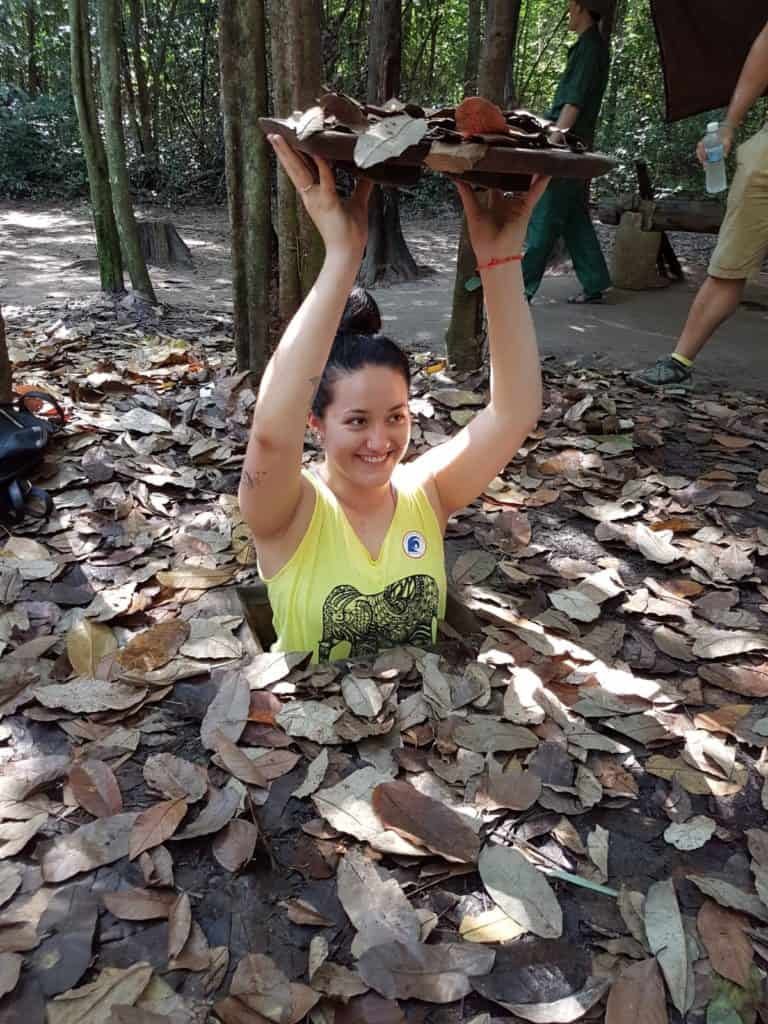
Visitng The Cu Chi Tunnels
When visiting the Cu Chi Tunnels, the tunnels alone paint a chilling picture of what fighting and living in the Vietnam War was like.
If you take a guided tour (and I recommend you do this one) you will start the tour by watching a short introductory video that explains how the tunnels were constructed.
Almost immediately upon entering the outdoor museum, you are guided to fit your body into a tunnel hiding place – a space completely suffocating – even after being expanded to fit western tourists.
From here, you will be guided around the site that is open to tourists. You are able to enter several of the tunnels and walk along inside of them from one place to the next. You see things like the hospital they used, where the Vietnamese slept. You learn how cooking was done discretely, and so, so much more.
It’s chilling underground; incredibly hot, exhausting, and not for the faint of heart. I never realised how claustrophobic I was until I was down the first tunnel. Immediately I started to sweat, my heart rate rose, and I was ready to sit down and pass out.
Thankfully, there are many exit places for those like me who wanted to give it a go but needed an out. You can trail along on the surface, meeting up with everyone still underground at each exit point, or if you’re brave, do the whole underground tunnel walk.
If the sights aren’t real enough, the sounds will bring you back to reality. There is a range in the area where you can shoot weapons that were used during the war. Don’t worry- you don’t have to. Next to it is a lovely spot to sit down and enjoy a cold refreshment or morning or afternoon tea.
But, exploring the area while hearing gunshots in the background provides a chilling, almost realistic spin on the experience.
Finally, before exiting back at the museum and gift shop, you have the option to try authentic food and tea that the Vietnamese would have been eating and drinking while living in the tunnels.
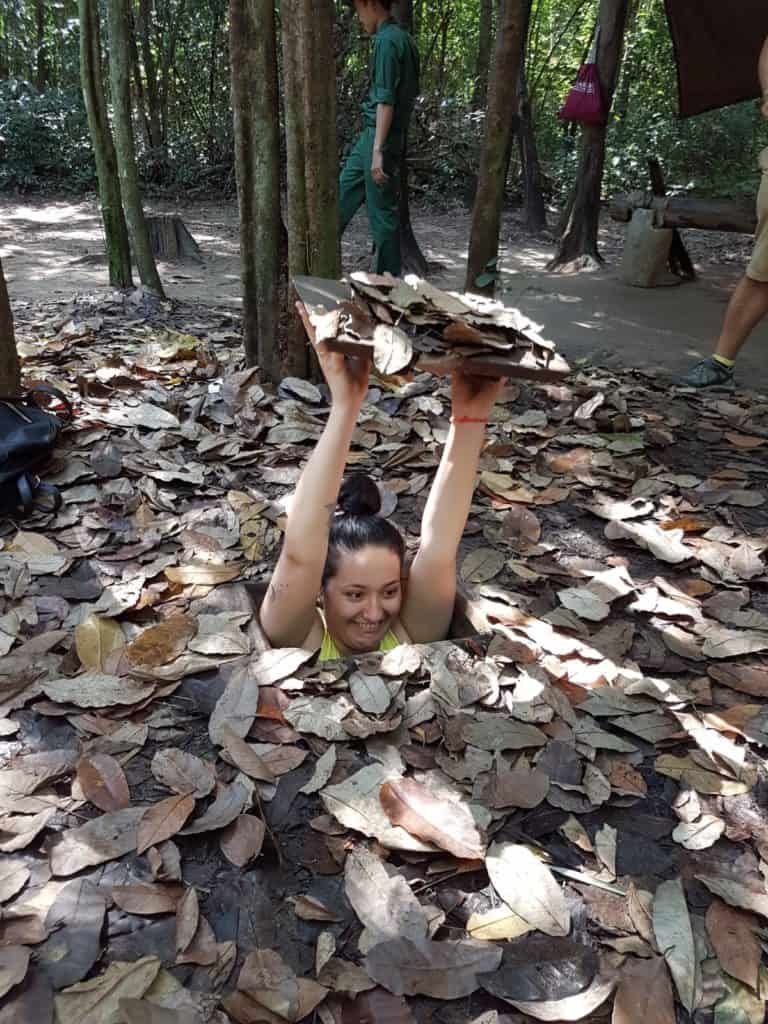
How Vietnam’s Cu Chi Tunnels functioned
Between the tunnels, kitchens, and traps, your interest is immediately caught by how resourceful and engineering the fighters were. Booby traps swarmed the grounds during the war and this tour provided a detailed display of the gruesome concoctions.
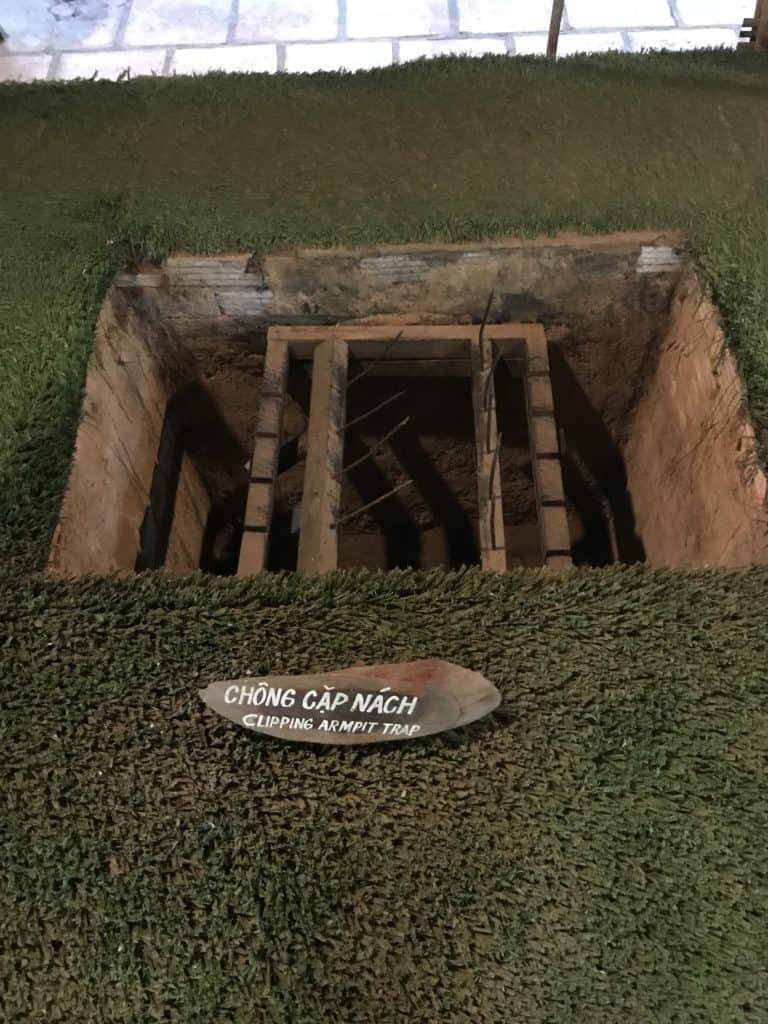
The Viet Cong also constructed their sandals from tire rubber, designing the foot-shaped sole facing backwards to thwart anyone following their foot trail.
The kitchens had tunnels dug out so that cooking smoke could release from the ground in another location so as not to give away their position.

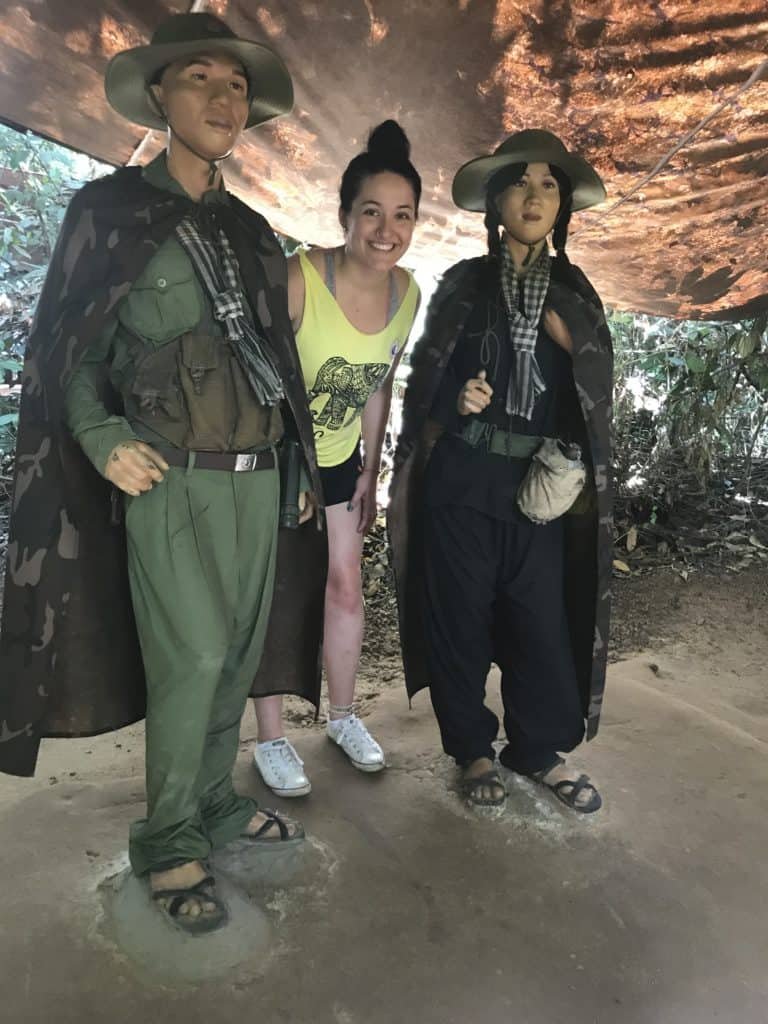
Final Thoughts on Exploring Vietnam’s Cu Chi Tunnels
The Cu Chi Tunnels is something you have to experience firsthand to truly understand, and I recommend everyone visits them at some point in their life.
Whether you love history or not, it is an experience worth having.
I highly recommend taking a guided tour. Not only do you learn all about the history of those that lived and died within and fighting for the tunnels but most of the guides are directly connected to the Vietnam war in some way or another.
Hearing the other side of the story was so important to me. Hearing firsthand how the Vietnamese felt about the war (and even Americans) was a unique experience. My guide was the youngest of 4 children- all of which born inside the tunnels when his parents were living inside them. To hear that each day they lived from dawn until dusk deep underground was truly heartbreaking and incredibly interesting. It’s unfathomable, but it was their reality. They ate roots, lived off little to no water or oxygen, and dealt with deadly illnesses on a daily basis- barely batting an eyelid at the horribleness of their conditions.
It was a true reminder of what humanity can endure, but also an eye-opener into how harsh we can be.

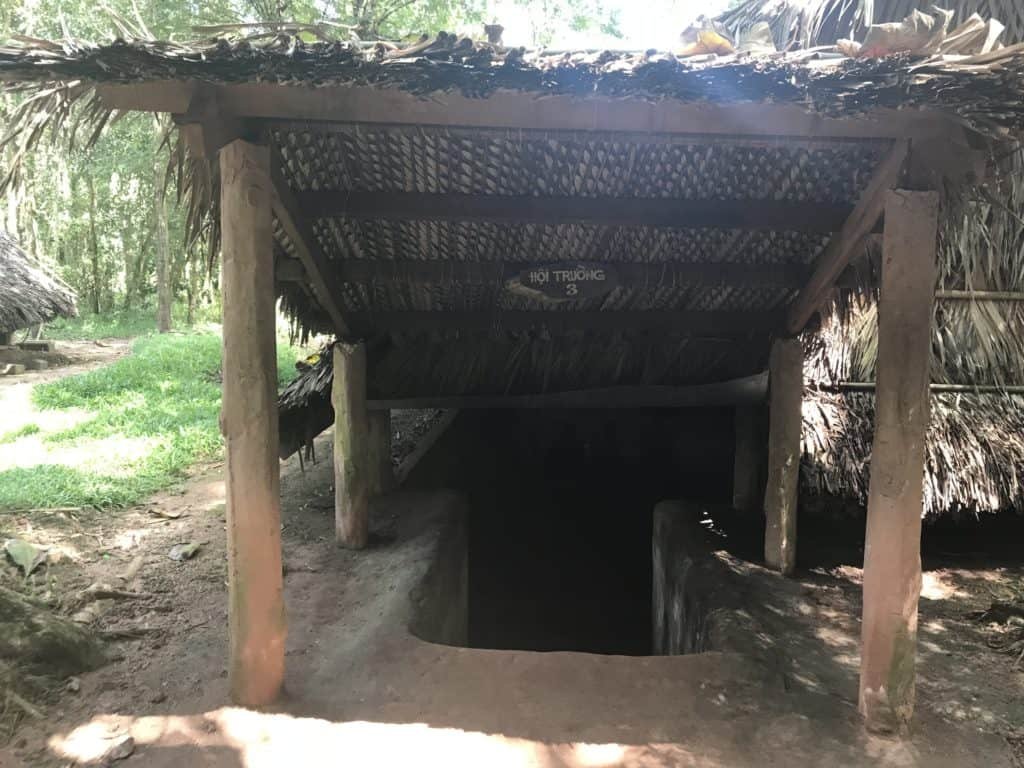






Leave a Reply